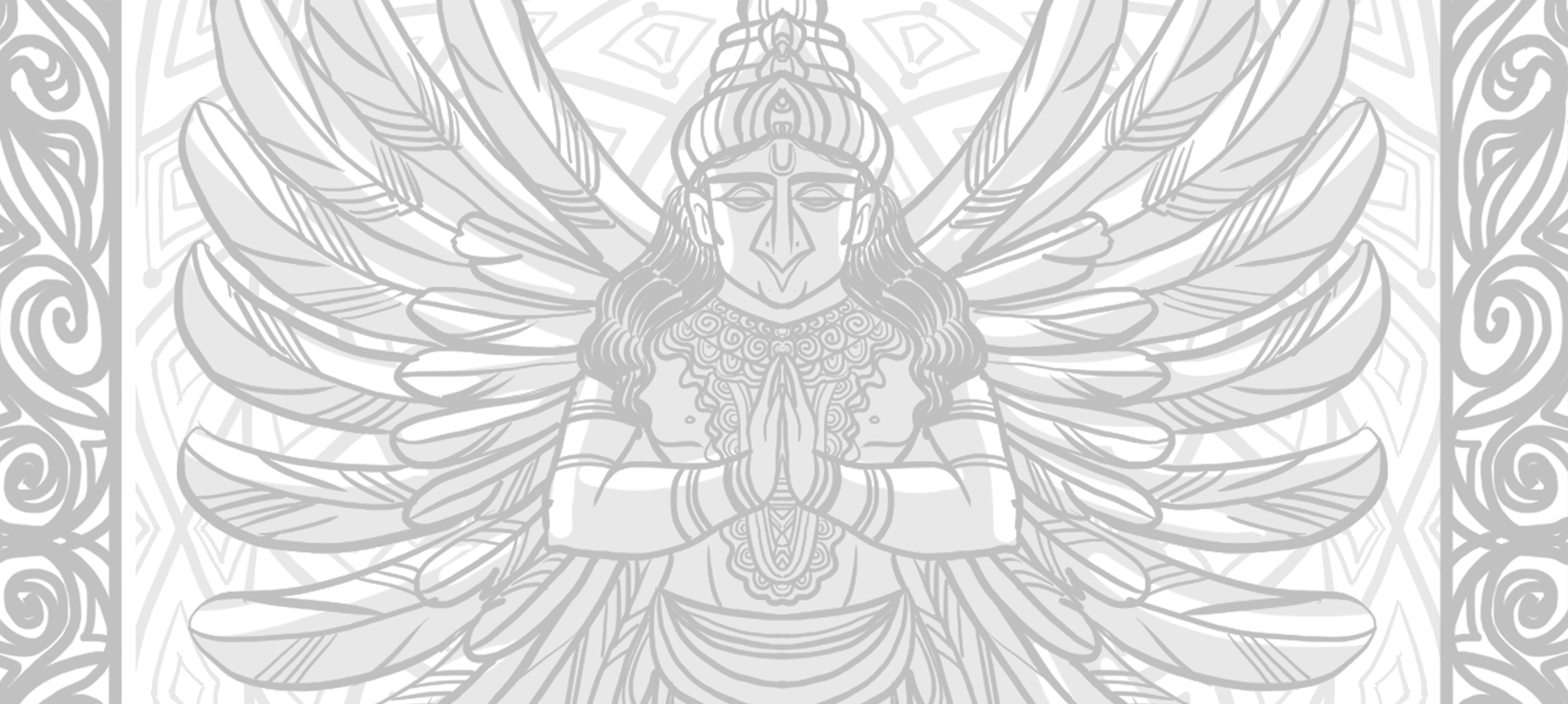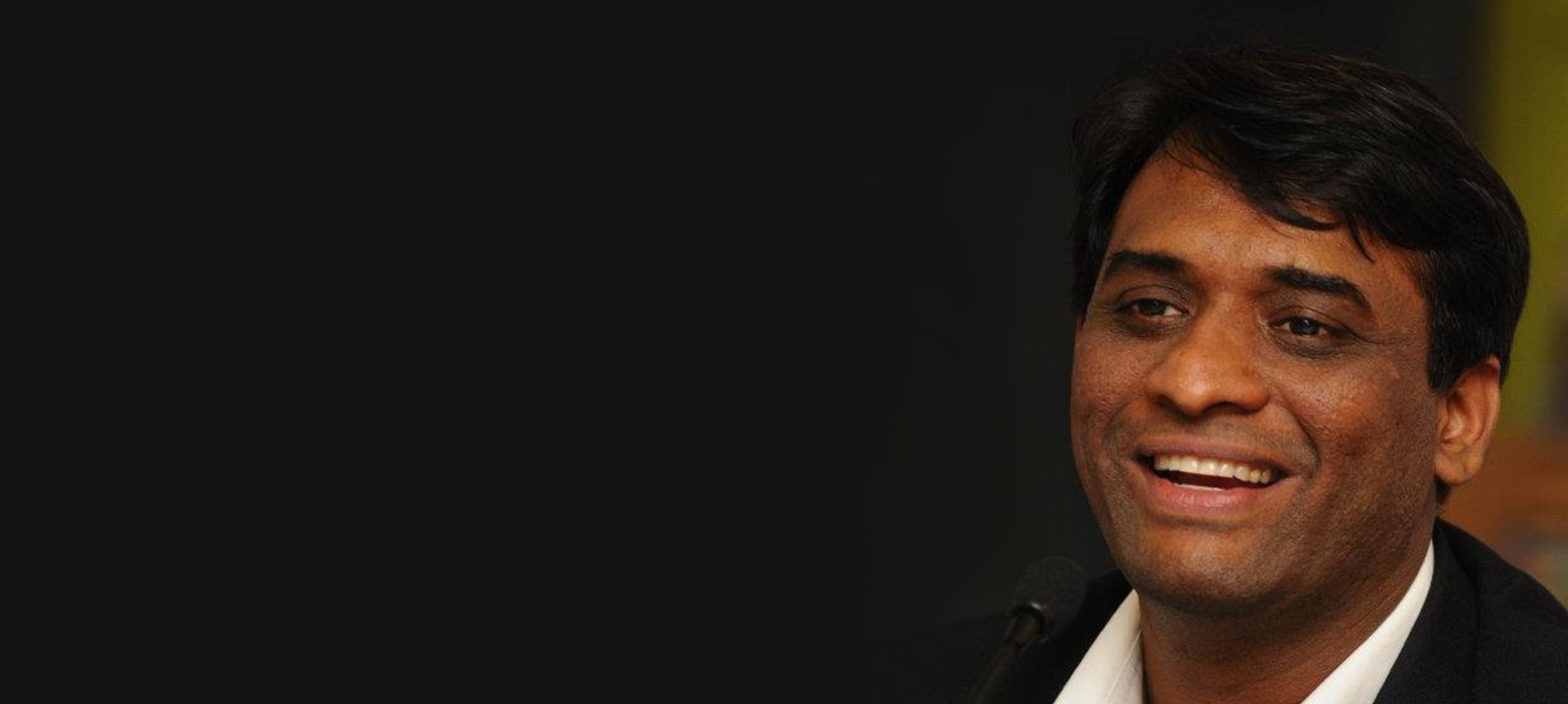‘Uncommon Type’ marks the debut as a writer of the award-winning actor Tom Hanks. This delightful collection of seventeen short stories dissects with great affection, humour and insight, the human condition and all its foibles.
Here’s an excerpt from the book.
Anna said there was only one place to find a meaningful gift for MDash— the Antique Warehouse, not so much a place for old treasures as a permanent swap meet in what used to be the Lux Theater. Before HBO, Netflix, and the 107 other entertainment outlets bankrupted the Lux, I sat for many hours in that once- splendid cinema palace and watched movies. Now it’s stall after stall of what passes for antiques. Anna and I looked into every one of them.
MDash was about to become a naturalized U.S. citizen, which was as big a deal for us as it was for him. Steve Wong’s grandparents were naturalized in the forties. My dad had escaped the low- grade thugs that were East European Communists in the 1970s, and, way back when, Anna’s ancestors rowed boats across the North Atlantic, seeking to pillage whatever was pillage-able in the New World. The Anna family legend is that they found Martha’s Vineyard.
Mohammed Dayax- Abdo was soon to be as American as Abdo Pie, so we wanted to get him something vintage, an objet d’patriotic that would carry the heritage and humor of his new country. I thought the old Radio Flyer wagon in the second warehouse stall was perfect. “When he has American kids, he’ll pass that wagon on to them,” I said.
But Anna was not about to purchase the first antique we came across. So we kept on hunting. I bought a forty- eight-star American flag, from the 1940s. The flag would remind MDash that his adoptive nation is never finished building itself— that good citizens have a place somewhere in her fruited plain just as more stars can fi t in the blue field above those red and white stripes. Anna approved, but kept searching, seeking a present that would be far more special. She wanted unique, nothing less than one of a kind. After three hours, she decided the Radio Flyer was a good idea after all.
Rain started falling just as we were pulling out of the parking lot in my VW Bus. We had to drive slowly back to my house because my wiper blades are so old they left streaks on the windshield. The storm went on well into the evening, so rather than drive home, Anna hung around, played my mother’s old mixtapes (which I’d converted to CDs), cracking up over Mom’s eclectic taste, in the segues from the Pretenders to the O’Jays to Taj Mahal.
When Iggy Pop’s “Real Wild Child” came on, she asked, “Do you have any music from the last twenty years?”
I made pulled- pork burritos. She drank wine. I drank beer. She started a fire in my Franklin stove, saying she felt like a pioneer woman on the prairie. We sat on my couch as night fell, the only lights being the fire and the audio levels on my sound system bounding from green to orange and, occasionally, red. Distant sheet lightning fl ashed in the storm miles and miles away.
“You know what?” she said to me. “It’s Sunday.”
“I do know that,” I told her. “I live in the moment.”
“I admire that about you. Smart. Caring. Easygoing to the point of sloth.”
“You’ve gone from compliments to insults.”
“Change sloth to languorousness,” she said, sipping wine.
“Point is I like you.”
“I like you, too.” I wondered if this conversation was going someplace. “Are you flirting with me?”
“No,” Anna said. “I’m propositioning you. Totally different thing. Flirting is fishing. Maybe you hook up, maybe you don’t. Propositioning is the first step in closing a deal.”
Understand that Anna and I have known each other since high school (St. Anthony Country Day! Go, Crusaders!). We didn’t date, but hung out in the same crowd, and liked each other. After a few years of college, and a few more of taking care of my mom, I got my license and pretended to make a living in real estate for a while. One day she walked into my office because she needed to rent a space for her graphics business and I was the only agent she could trust because I once dated a friend of hers and was not a jerk when we broke up.
Anna was still very pretty. She never lost her lean, rope-taut body of a triathlete, which, in fact, she had been. For a day, I showed her some available spaces, none of which she wanted for reasons that made little sense to me.

Tag: featured
Debunking Myths of Staying Abroad
In How May I Help You, Deepak Singh chronicles his journey as an Indian immigrant in the United States of America. Even though he had an MBA degree, all he could do was to a minimum-wage job in an electronics store. As the days pass, he confronts an alien culture, experiences racism and observes the crushing reality of being poor.
Here are five quotes that debunk the myths of living abroad:





Aren’t these quotes eye-openers?

Revisiting the Past in order to Recapture and Relive it!
By Anuja Chandramouli
People are always curious to know why I have opted to write persistently in the genres of mythology and history, some going so far as to insinuate that it is most fuddy – duddy of me to do so, mistakenly assuming that it has neither the oomph factor nor the glam quotient. Those inclined towards calculation are convinced it is the financial aspect of writing about controversial topics in current times where people are working themselves into a tizzy over stories blasted out from the past that sets my creative registers ringing. Well-meaning readers are always trying to persuade me to give up on ancient, dusty tales and churn out a torrid contemporary romance or lurid pulp fiction convinced that it is the only way to get Hollywood head honchos to sit up, take notice (not Harvey Weinstein, thank you) and hand me the golden ticket to instant fame and fortune. As for me, all I can say is that I tend not to analyse the nitty gritty of my literary choices and it is somewhat scary how impulsive I am when it comes to these things. If pressed though, I would say that the real reason I do what I do is incurable wanderlust.
That is right. I am afflicted with a wicked case of wanderlust! I have always been consumed by an intensely strong desire to travel and see everything there is to see not just in the known Universe but whatever lies well beyond the ken of all things documented and experience things that nobody has before. Ever since I heard about them, I have been ridiculously resentful of the likes of Marco Polo, Ibn Battuta, Hiuen Tsang for obvious reasons and even every astronaut or cosmonaut who has been space hopping when it seems most unlikely that I will ever get the chance to do the same. However, if there is one thing to be learned from the objects of my envy, it is that there is no time like the present to pack up and go where the path leads without allowing yourself to become uncomfortably bound by circumstance. So I do just that, even if it is in my own head, and then before I know it, I am soaring on the wings of my thoughts to parts unknown, in search of adventure and in the thick of a treasure hunt for ancient truths in the shifting sands of time.
Thanks to the limitless capacity of a restless, insatiably curious mind, it is possible not only to take off wherever you wish to go but to inaccessible regions that are beyond the reach of the marvels of technology. Armed with little more than a few dusty tomes and a hyper imagination it is possible to dive deep into the past, tumbling pell-mell into the hidden caverns of history, floating like a sliver of a ghost into the shadowy, magic strewn realms of myth and legend, or gambolling aimlessly in the wildest outposts of pure fantasy with fairies and monsters. Every nook and cranny of this marvellously meandering journey is usually crammed with nuggets of all things intriguing, and it is always exciting! You never know what you will unearth, what or who you will run into or where you may land up even if you have mapped out the path with a specific destination in mind.
Having indulged in this mode of travelling often enough, I can confidently extol its many virtues, not the least of which is that you don’t have to put yourself through the tortures of crowded popular tourist spots where you get jostled while standing in interminable queues, heckled by obnoxious folks or be forced to endure fellow travellers in confined spaces where children howl and too many subject others to their flatulence and other gross bodily eructations. Thankfully there need be no narcissistic posing or incessant selfie-taking either. Why bother with capturing the moment when you are actually living it up in the moment and creating indelible memories to be ever treasured and shared with all who are willing to relive your travels through your words?
Writing in history and mythology is like clambering up Enid Blyton’s Faraway Tree to explore the wondrous lands beyond. Thanks to my passion for my chosen subjects, I have held Arjuna’s hand as we explored the fabled, wondrous landscape of his life against the staggering backdrop of the Mahabharata; taken a rollicking ride into the very heart of desire and its tantalizing dark side with Kamadeva ; experienced the all-encompassing power of Shakti, the Divine Feminine; rooted about in the realms of death and damnation with Yama’s Lieutenant; unravelled the puzzle that is Kartikeya, the Destroyer’s loveable son; caught up with my childhood crush Prithviraj Chauhan, celebrated his triumphs and cried over his tragic losses; and watched in mute horror as Padmavati burned…
My work is something that has my unconditional love even when I am tempted to throw it all away with its attendant frustrations, solitary travails, rich rewards, pitiful returns and crushing insecurity. Still, when I am not feeling hopeless, I will remain ever grateful for the precious gifts that are words and stories, which has enabled me to transcend the limitations of a cruel world and go wherever the heart leads. And people wonder why I do what I do!
About the Author
Anuja Chandramouli is the bestselling author of Arjuna: Saga of a Pandava Warrior-Prince, with Kamadeva: The God of Desire, Shakti: The Divine Feminine and Yama’s Lieutenant. She is an accomplished storyteller who is regarded as a one of the well-known names in mythological fiction.

‘We That Are Young’, An Excerpt
Preti Taneja in ‘We That Are Young’ recasts ‘King Lear’ in fresh, eviscerating prose that bursts with energy and fierce, beautifully measured rage. The novel revolves around Devraj, founder of India’s most important company, who on retiring demands daughterly love in exchange for shares.
Here’s an excerpt from the book.
It’s not about land, it’s about money. He whispers his mantra as the world drops away, swinging like a pendulum around the plane. The glittering ribbon of the Thames, the official stamps of the Royal parks, a bald white dome spiked with a yellow crown, are swallowed by summer’s deep twilight. The plane lifts, the clouds quilt beneath it, tucking England into bed to dream of better times. It is still yesterday, according to his watch. He winds the dial forwards. Now it is tomorrow, only eight hours to go.
He’s landed the window seat with the broken touchscreen: it’s either in-flight information or Slumdog Millionaire, the last movie he ever took Ma to. They went on release weekend. The entire line of people had been brown so for once Ma didn’t hunch in his shadow as if his jeans and camel coat would protect her, explain her. Instead they had the same old fight about Iris, and as he bought toffee popcorn she began to sniff: she said she was catching a chill. She kept up the sniffing as the credits rolled over the entire cast line-dancing on the set of an Indian train station. When they got outside he thought she’d been crying. He put his arms around her: her head was the perfect place for his chin to rest. He asked her if she liked the movie, she said she didn’t at all. It was not real India, except for the songs.
It’s been a long haul from JFK to the LHR stopover. He’s half shot with the comfort of Johnnie Walker, knows it’s not the best but he appreciates the label. It feels bespoke to him, like a child in a gift shop who finds a mug with his own name on it. No gift shop in America has a JIVAN mug so he borrowed JON, and that’s been it since he did this trip the other way. Thirteen-years-old: sold on leaving India by the promise of his first time in the air.
Forward, forward, he wills the plane, drumming his hands on his tray-table, earning himself a sideways glance from the woman wedged into the seat next to him. She’s using her iPhone (4) to photograph the back page of the in-flight magazine: Ambika Gupta: offering you the miracle of advanced Numerology: a digit for your future. She pokes the man on her other side: Sardarji in a blue turban, matching jersey stretched over his belly, stitched with a white Number 5. Dude looks like he’s birthing quintuplets under there. She smiles at him, sits back in her seat. There are thin red lines traced all over her hands in fading bridal henna as if she’s been turned inside out, painful, beautiful, the pattern of her is all paisleys. Her ring is a platinum band with a square cut white diamond and her bag is Longchamp like all the pretty-pretty girls have; navy waterproof with brown leather trim, but small, the cheapest. Don’t you know, pretty girl, that no bag is better than trying too hard? She’s flicking through the magazine: ads for Marc Jacobs, Charlize Theron, flicks to the gadgets, flicks to the movies, clink-chimeclink go the red glass bangles stacked up her wrists.
It sounds like the overture to Ma’s practice music. Played for her to dance Kathak, with precision, while Jivan kept time. Fist thumping into palm, Dha-din-din-dha. His memories are coloured by her last months – Ma, fading from brown to yellow, a bruise that would not heal against the hospital white. Dha-din-din-dha became her fingers beating lightly on his temples – blurring into the rattle of her breath towards the end – the background hum of the plane’s engine in his ears. They are cruising high over the mountains of who knows where.
He pulls out his own magazine. The cover is a cartoon illustration – a tiny brown body topped with an oversized head. Under a halo of white hair, two puffed cheeks blow out candles on a vast birthday cake the shape of an udder. India, sprouting with the turrets of heritage hotels, factory chimneys. Cars race off its surface, bolts of cloth unfurl, tigers hunt goats through spurting oil rigs. The orange headline shouts: Happy 75th Birthday Devraj Bapuji! The spotlight falls on the wily old face. This man, on this cover, on this flight – this is what Ma would have called a sign.

Meet the Deities from Hindu Mythology
The Hindu mythology comprises of many deities who are worshipped in many forms across India. We all have heard stories about them and have been fascinated about by them. Award-winning author Sudha Murthy in her new book, The Man from the Egg brings together fascinating tales of the most powerful gods from the ancient world.
Here are a few of those deities:





How many of these deities did you know about?

Six Science(Ish) Facts from Movies That Will Surprise You
Covering movies from 28 Days Later to Ex Machina, Rick Edwards and Dr Michael Brooks take the readers on a joyous ride through astrophysics, neuroscience, psychology, botany, artificial intelligence, evolution, and plenty more subjects that are invoked by your favourite movies.
Here are six facts that will blow your mind:
The Martian

Jurassic Park

Interstellar

Back to the Future

Planet of the Apes

Interstellar

Fascinating, isn’t it?

5 Books That Will Help You Keep Your New Year Resolutions
New Year begets hopes and possibilities to achieve what we have been resolving to do all year. So, if you are looking for additional motivation, we have got you covered!
Here are five books that will help you achieve your New Year’s resolutions:
Hack into Your Creativity

If you have resolved to pursue writing, this is the book for you. If you’re new to writing prompts, indulge in all the different ways you can kick-start the creator inside of you. Hack into your creativity is equipped to help you discover interests and abilities that you didn’t even know you had.
My First Kitchen
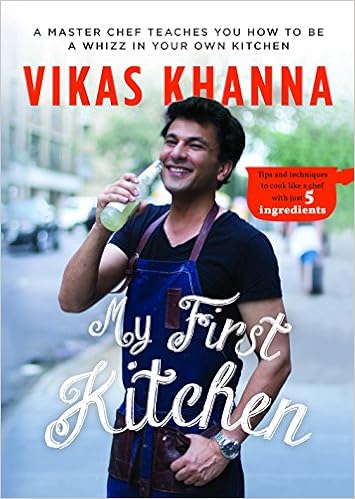
New year is all about new beginnings. So, if you are just beginning to cook, let Michelin-starred chef, restaurateur and food writer, Vikas Khanna help you achieve your goal. In this book, Khanna teaches you how to take the first step in establishing a kitchen of your own. With over 100 recipes, you will become a whizz-cook in no time.
Where Will You be in Five Years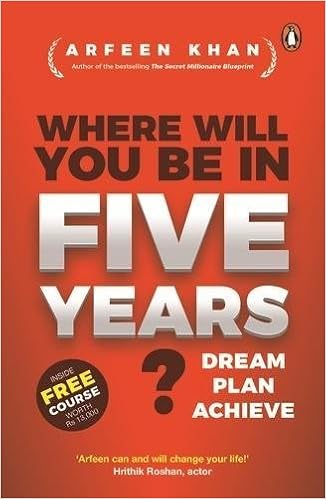
If you have been resolving to set goals for yourself, here’s a suggestion for you. Peak performance coach Arfeen Khan in Where will you be in five years gives you not only the mantra to turn your dreams into reality, but also puts a deadline to it. This book will help you overcome your personal problems and set on a path of growth and change.
The Shivfit Way

What if we told you that the author of this book is the trainer behind Aamir Khan’s muscular look in Dhoom 3, Sonakshi Sinha’s bodacious curves in Dabangg and can help you achieve your fitness goals? Shivoham in The Shivfit Way outlines eight basic moves that will help you achieve a strong body and ensure you meet all your fitness goals.
The Pioppi Diet
![The Pioppi Diet: A 21-Day Lifestyle Plan by [Malhotra, Aseem, O'Neill, Donal]](https://images-eu.ssl-images-amazon.com/images/I/41NJ6j%2B4z-L._SY346_.jpg)
Are you stressing over eating right and being healthy? Then your worries end right here! Dr Aseem Malhotra, based on five years of research, has created a diet which does not require you to say ‘no’ to things you love, nor exercising for hours. The Pioppi Diet will help you make simple, achieve, and long-lasting changes while letting you eat your favourite things.
So, now go get that resolution fulfilled!
7 Unputdownable Books We Got to Read in 2017
The year 2017 gave us some remarkable reads. From thriller to young adult, self-help to professional, we got ‘em all! So, if you are looking to round-up the year, here are 7 books out of those magnificent reads.
The Ministry of Utmost Happiness
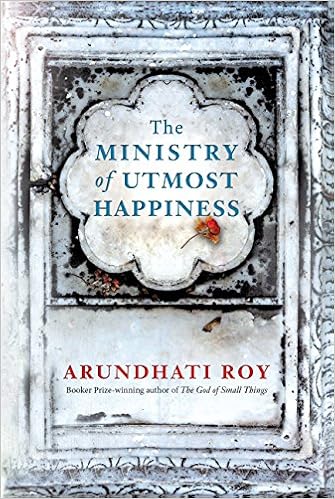
The year 2017 saw the return of the Man Booker Prize Winner Arundhati Roy into the fiction genre with The Ministry of Utmost Happiness. This ravishing, magnificent book reinvents what a novel can do and can be. And it demonstrates on every page the miracle of Arundhati Roy’s storytelling gifts.
The House That Spoke
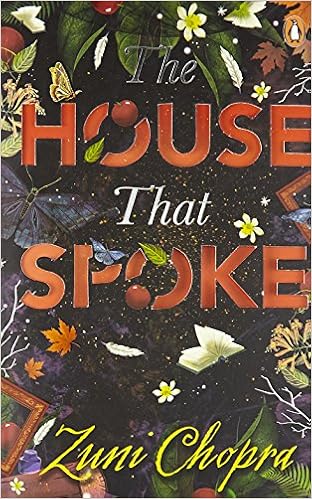
The House that Spoke marks the debut of fifteen-year-old author Zuni Chopra. It tells the story of Zoon Razdan and the fantastical house she lives in. She can talk to everything in it, but Zoon doesn’t know that her beloved house once contained a terrible force of darkness. When the dark force returns, more powerful than ever, it is up to her to take her rightful place as the Guardian of the house and subsequently, Kashmir.
Vyasa
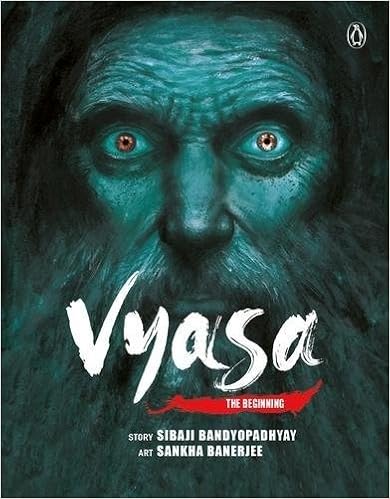
With 1600 electrifying visuals for hot-hearted adults- Vyasa sets in motion the battlefield of Kurukshetra. From the birth of the Pandavas and Kauravas to the interpenetration of life instincts and death instincts, this first book in this graphic book series rolls out the beginning of interplay of lust and violence which gives to the tale of war, revenge and peace the unmatched regal look.
The Case That Shook India
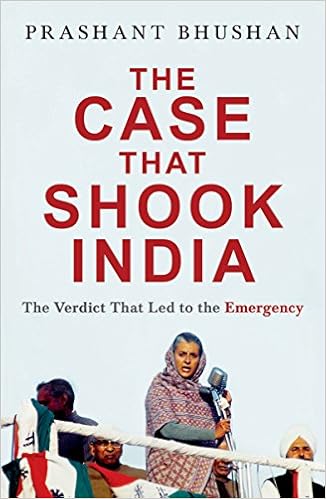
On 12 June 1975, for the first time in independent India’s history, the election of a prime minister was set aside by a High Court judgment. The watershed case, Indira Gandhi v. Raj Narain, acted as the catalyst for the imposition of the Emergency. Prashant Bhushan in The Case That Shook India provides a blow-by-blow account and offers the reader a front-row seat to watch one of India’s most important legal dramas unfold.
Friend of my Youth
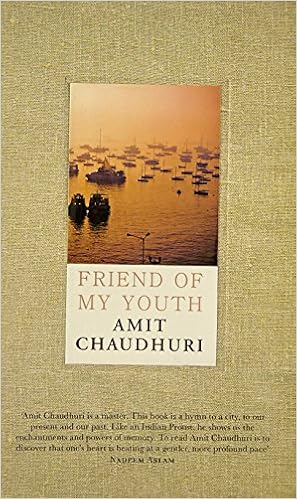
Amit Chaudhuri in Friend of My Youth tells the story of a writer in Bombay for a book-related visit and finds himself in search of the city he grew up in and barely knows. Friend of My Youth is at once an unexpected exploration and a concentrated reminiscence woven around a series of visits to a city that was never really home.
Aurangzeb: The Man and the Myth

Aurangzeb reveals the untold side of a ruler who has been peddled as a Hindu-loathing bigot, murderer, and religious zealot. In this bold and captivating biography, Audrey Truschke enters the public debate with a fresh look at the controversial Mughal emperor.
Padmini: The Spirited Queen of Chittor
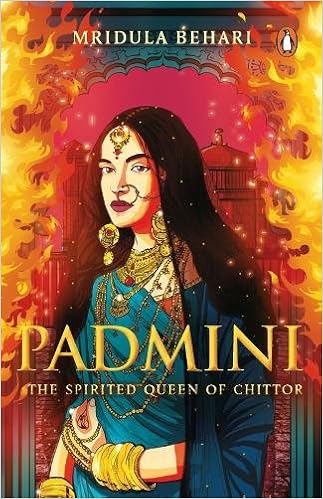
Mridula Behari’s Padmini is narrated from Padmini’s perspective and is a moving retelling of the famed legend that brings to life the atmosphere and intrigue of medieval Rajput courts. You cannot help but be engrossed as Padmini grapples with the matter of her own life and death, even as she attempts to figure out what it means to be a woman in a man’s world.
So, which was your favourite read of 2017?
Who is Chatur Chanakya and Why Should Children Meet Him? Radhakrishnan Pillai Answers
From Corporate Chanakya to Chatur Chanakya, what inspired this transition in writing for a different audience?
It was a new dimension for me. Even though the common connect between Corporate Chanakya and Chatur Chanakya is the same – Chanakya, it is very differently presented. Corporate Chanakya was meant as a management book especially for those who are in management and leadership positions. The audience was educated and already decision makers. While Chatur Chanakya was a different aspect. Reaching out to children who are 10 years old. The challenge was to make the profound knowledge of Chanakya from the Arthashastra, to be presented in a simple format. When the puffin team approached me with this concept to write for kids, it was a challenge. But I got inspired to try a new way of writing. And thanks – the book has really come out well. Much better than what was expected.
Is the character of young Chatur inspired by anyone from your life?
Yes and No. Chatur Chanakya is an imaginary character. Just like Superman, Batman and Chota Bheem. These characters are imaginary but have a message to give to kids. Through Chatur Chanakya we are going to bring out the best of wisdom of Chanakya (who lived nearly 2400 years ago) and his Kautilya’s Arthashastra. He was a leadership guru and a king maker. Chatur Chanakya will teach children how to think and become a leader. The other children in the book are inspired by real children. Arjun is the name of my son, who is the friend of Chatur Chanakya. Lakshmi is inspired by my daughter (her real name is Aanvikshiki). While Datta, Aditya and Milee are their friends. All of them become part of the book.
What is so special about Chatur and why should children befriend him?
Though a comic character. He is very real. Because he is a school going kid like any child of our generation. He has all the challenges that is faced by kids today. Be it bullying in schools, exam fever, being compared to other kids (even parents do that). So any one can associate with Chatur Chanakya. He is cute and nice. But he is also a fiend, philosopher and guide to his other classmates and friends. He is your friendly neighbour and ‘best friend’. He has got a choti on his head and a trick up his sleeve. You will love him. Not only children, but parents, grandparents and even teachers in schools will love Chatur Chanakya. He is what everyone wants in an ideal child – Intelligent and dynamic.
Tell us that one thing in Chatur Chanakya and the Himalayan Problem that one should look out for.
How to think out of the box. Chatur Chanakya faces a huge problem. Himalaya is a class mate of his, who is huge and bullies everyone. While Chatur Chanakya is not physically as strong Himalaya, he uses his intelligence to defeat Himalaya. So through this book we are giving a message to children, teachers and parents that – If you are mentally strong you can defeat any Himalayan (huge) problem.
Revisit school and relive all the memories with your little one in Radhakrishnan Pillai’s Chatur Chanakya and the Himalayan Problem!

The Naked Blogger of Cairo, An Excerpt
Marwan M. Kraidy in ‘The Naked Blogger of Cairo’ uncovers the creative insurgency at the heart of the Arab uprisings that took place in the Arab world from 2010 to 2012. Fueled by a desire of sovereignty, protestors flooded the streets and the media, voicing dissent through slogans, graffiti, puppetry, videos and satire that called for the overthrow of dictators and the regimes that sustained them.
Here’s an excerpt from the book.
The Naked Blogger of Cairo taps the human body as an organizing principle to understand creative insurgency. Th e body was a common thread in the massive trove of images and jo, essays and songs, videos and conversations I gathered while living in the Arab world between June 2011 and August 2012, during shorter research trips to Amsterdam, Beirut, Berlin, Cairo, Copenhagen, and Istanbul, and in protracted expeditions on the Internet. Bodies, burning with anger and defiance, throbbing with pain and hope, brazenly violating social taboos and political red lines, haunted my primary materials. A stencil graffiti to I photographed in November 2011 in Zamalek, an affluent Cairo neighborhood, features a television set with a headshot of a Pinocchio with a nose so overgrown it bursts through the screen. Here was a brief, compelling message that television is a liar, based on the body’s ability to betray falsity. It echoed fists, hands, and fingers in graffiti of the Syrian revolution I tracked in Beirut. Watching satirical videos, I wondered whom they skewered most: Was it Ben Ali, trapped on an airplane and unable to land in the jocular Journal du Zaba? Or Assad, downsized to a pathetic finger puppet in Top Goon— Diaries of a Little Dictator? Or maybe Mubarak, diminished by the splendid Laughing Cow trope to dumb, regurgitating cattle? Spectacular body acts that underlay pivotal events of the Arab uprisings take center stage in this book: Mohamed Bouazizi, the Burning Man of Tunisia; Aliaa al- Mahdy, the Naked Blogger of Cairo; Assala, the Rebellious Singer of Damascus. Regimes responded with body mutilation: hand breaking, eye sniping, virginity testing, as street art commemorated heroic bodies of martyrs pitted against repressive bodies of despots.
Why is the body fundamental to the Arab uprisings?
History tells us that corporeal metaphor is central to political power: from before Louis XIV to after Bashar al- Assad, the sovereign’s figure is the body of the realm. Writing in Baghdad and Damascus during the tenth century, the Islamic Golden Age philosopher and translator Abu Nasr alFarabi cast the ideal polity as a healthy body, and he described in The Perfect State different parts of the state as limbs, ruled by a commanding organ, the heart, that unifies their efforts toward achieving the contentment of the community. In The King’s Two Bodies: A Study in Mediaeval Political Theology, the German- American historian Ernst Kantorowicz traced a concept of “body politic” that envisions a kingdom as a human body, the king as its head and his subjects as organs and limbs. Developing fully in Elizabethan England, this notion recurred for centuries in European political thought and popular culture, from Rousseau’s essays to Shakespeare’s plays, and became influential in France in the sixteenth century. During the French Revolution, corporeal symbolism focused on separating the king’s biological body natural from his symbolic body politic.
In medieval Europe, God was considered the greatest good, and from him the body politic flowed as a unified organism. In contrast, in the months beginning with Mohamed Bouazizi’s self-immolation on December 17, 2010, the three Arab countries that we are most concerned with— Egypt, Syria, and Tunisia— were thoroughly secular autocracies. In all three, political leaders subjected clerics to their dominion and manipulated religion for political ends, but none of them derived his power from the divine, ruled in the name of God, or based foreign policy on religious grounds. Whereas in thirteenth- century Eu rope the body politic belonged to the sacred, in early twenty-first-century Egypt, Syria, and Tunisia the body politic was resolutely worldly. Body imagery is important to modern, secular absolutism, with its image of “the omniscient, omnipotent, benevolent” leader who “defies the laws of nature by his super- male energy.” As you read The Naked Blogger of Cairo, you will encounter the same language in encomia to Assad, Ben Ali, Mubarak, and Sisi. Creative insurgencies against these rulers subvert the imagery propagated by cults centered on the leader’s figure. The body is as foundational to the fall of dictators as it is essential to their rise. Over time, the notion of the body politic evolved to balance hierarchy with interdependence, leading to political pacts that preserved stability but, if broken, invited rebellion. By confirming “the irreplaceable and irreducible moral dignity and spiritual worth of individual man” and insisting that the king was an integral part of the body politic, not standing above it, the medieval notion succumbed to ideological manipulation by politicians leading the rise of new secular states. Emerging lay conceptions of the body politic pilfered at will from Christian theology, Roman law, and canon law, diluting monarchical power. By the late 1300s, bodily metaphor was moving away from the absolute concentration of power in the body of the king, as a conception of a “composite” body of authority including courts, councils, or parliaments gained ground. In the notion of distributive justice that arose to balance these different constituents, one can hear echoes, however faint, of bread- for- stability social contracts that since the 1950s have propped up Arab dictatorships. Because these bargains were fickle, bread riots occurred frequently. Since the 1980s, a combination of economic liberalization, political predation, and rising food staple prices has stretched the bargain to a breaking point.












